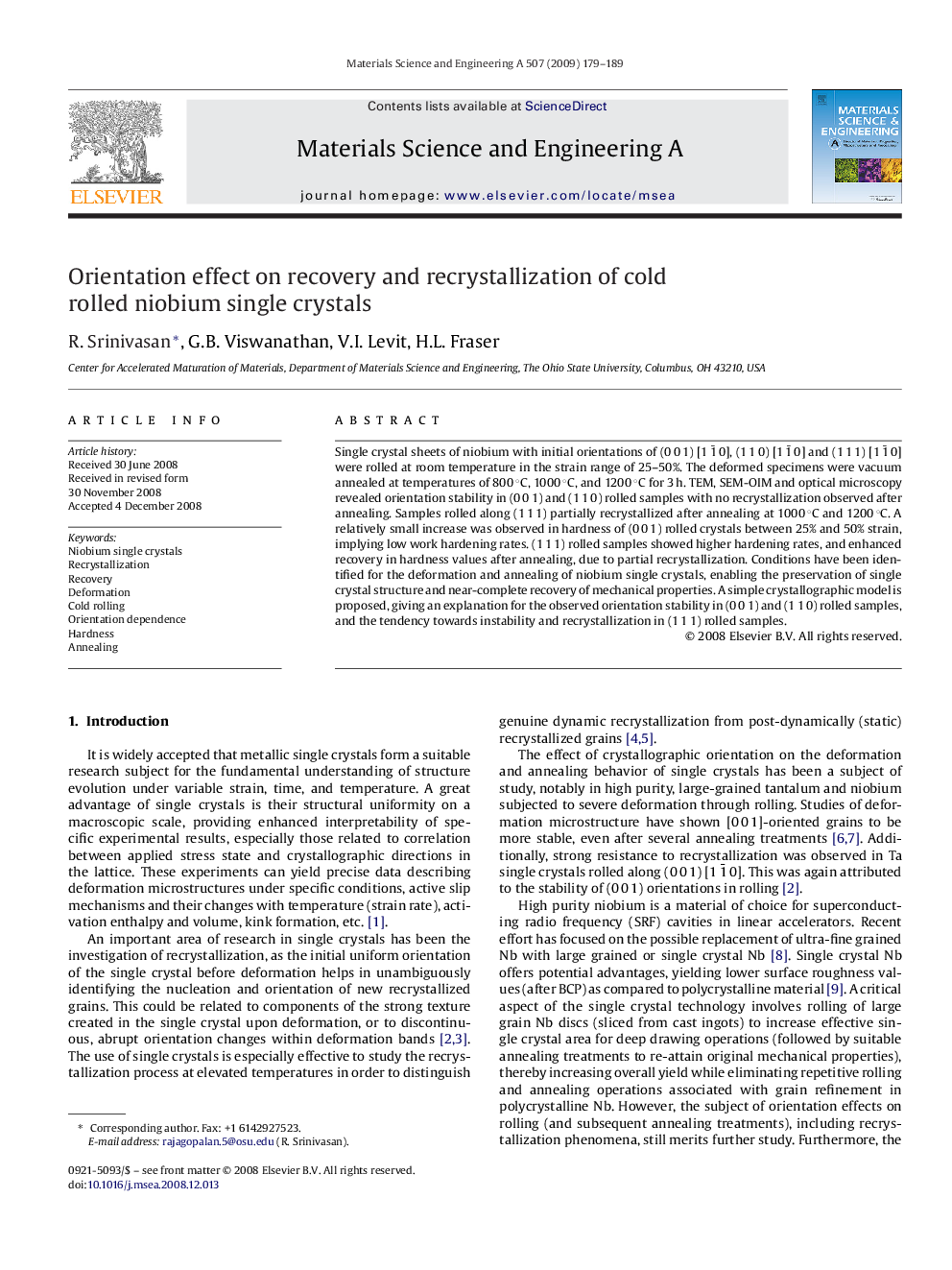| Article ID | Journal | Published Year | Pages | File Type |
|---|---|---|---|---|
| 1581070 | Materials Science and Engineering: A | 2009 | 11 Pages |
Abstract
Single crystal sheets of niobium with initial orientations of (0 0 1) [11¯0], (1 1 0) [11¯0] and (1 1 1) [11¯0] were rolled at room temperature in the strain range of 25-50%. The deformed specimens were vacuum annealed at temperatures of 800 °C, 1000 °C, and 1200 °C for 3 h. TEM, SEM-OIM and optical microscopy revealed orientation stability in (0 0 1) and (1 1 0) rolled samples with no recrystallization observed after annealing. Samples rolled along (1 1 1) partially recrystallized after annealing at 1000 °C and 1200 °C. A relatively small increase was observed in hardness of (0 0 1) rolled crystals between 25% and 50% strain, implying low work hardening rates. (1 1 1) rolled samples showed higher hardening rates, and enhanced recovery in hardness values after annealing, due to partial recrystallization. Conditions have been identified for the deformation and annealing of niobium single crystals, enabling the preservation of single crystal structure and near-complete recovery of mechanical properties. A simple crystallographic model is proposed, giving an explanation for the observed orientation stability in (0 0 1) and (1 1 0) rolled samples, and the tendency towards instability and recrystallization in (1 1 1) rolled samples.
Related Topics
Physical Sciences and Engineering
Materials Science
Materials Science (General)
Authors
R. Srinivasan, G.B. Viswanathan, V.I. Levit, H.L. Fraser,
